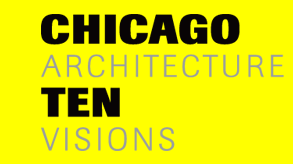 |
 |
|
|
|
|
RON KRUECK
Ron Krueck, Fellow of the American Institute of Architects (AIA), is a practicing architect and professor of architecture at the Illinois Institute of Technology, where he received his bachelor of architecture in 1970. In 1979 he established his own practice, first Krueck and Olsen, and in 1991, Krueck and Sexton Architects. Drawing strength and inspiration from the rich traditions of Chicago, Krueck has explored and extended the modern architectural canon and demonstrated its legacy’s continuing vitality. His clients include the Museum of Contemporary Art, Herman Miller, Northern Trust, and Shure. His architecture is explored in the 1997 Monacelli Press monograph Krueck & Sexton: Works in Progress. Current work includes a private residence in Florida and a fountain in Millennium Park with artist Jaume Plensa. Krueck won a recent competition for the Spertus Institute of Jewish Studies. Continuing a lifelong interest in modern art and sculpture, Krueck also serves on committees for contemporary art at the Art Institute of Chicago and the National Gallery of Art.
|
 |
The Rectangle: Vision of the Essential
The abstract nature of this space lends itself to an ambiguous, poetic experience for the visitor. The installation explores the rectangle as an abstraction of architecture’s proportion, harmony, and structure. In the horizontal position, the rectangle establishes an edge of the horizon and landscape. When the rectangle is vertical, it becomes the indicator and measure of man—our upright position on the earth.
Architect’s statement
The rectangle is a vision of essentials. It is an abstraction of architecture’s proportion, harmony, and structure. In the horizontal position, the rectangle establishes an edge of the horizon and landscape—the fundamental position of our origins. When the rectangle is vertical, it becomes the indicator and measure of man—our upright position on the earth, between ground and sky. We have placed our rectangle in a tenuous position, suspended between rising and falling, ascending and descending, past and future. The rectangle is poised at the hinge of success—or failure—of the current state of Chicago’s position in the world of architecture and the modern movement. The abstract nature of our space lends itself to an ambiguous, poetic experience for the visitor.
|
|
 |
|
|
